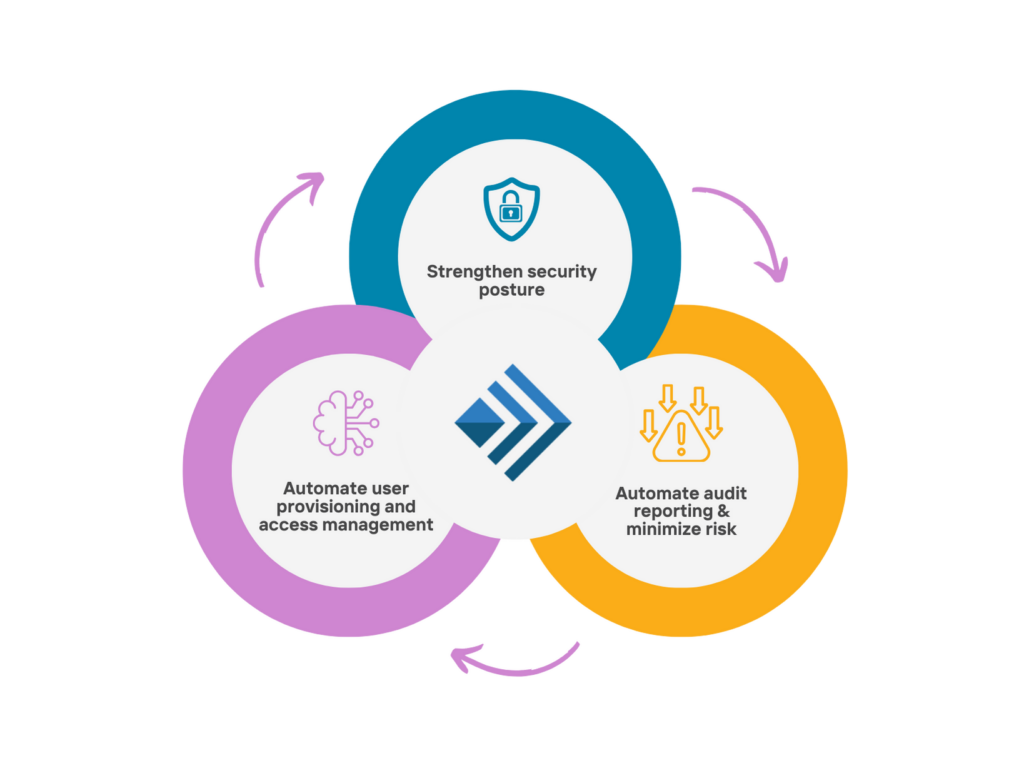
Are you a professional juggler? No? Then why are you trying to keep so many siloed systems up in the air? It’s only a matter of time before they all come falling, leaving you with nothing but a failed birthday party performance and a disappointed you! Identity orchestration may be your best defense against such disappointment.
Many companies deploy numerous IAM platform tools, with some utilizing more than 25 separate tools, to manage access rights. Additionally, the high percentage of organizations (96%) using multiple identity management tools showcases the complexity involved in this domain. The challenge lies in managing these diverse tools and optimizing investments in them.
Identity orchestration enables managing and coordinating an organization’s various identity-related processes and systems. It involves integrating different identity management technologies, such as user directories, authentication mechanisms, authorization systems, and identity verification services, to ensure a consistent and secure user experience across multiple applications and platforms. The benefits of identity orchestration are many, but here are five reasons why it plays a crucial role in an organization:
Centralized Identity Management
Identity orchestration enables organizations to consolidate and streamline identity management processes. This includes user provisioning, authentication, and authorization across diverse systems and applications. Centralizing these operations simplifies the task of managing user identities. This reduces the complexity and administrative burden associated with maintaining multiple identity repositories. Secondly, it promotes efficiency by eliminating redundant identity management tasks across various systems, reducing administrative overhead, and improving productivity. Lastly, identity orchestration ensures the enforcement of consistent security policies and access controls throughout the organization. This mitigates the risk of unauthorized access and enhances overall data protection.
Enhanced User Experience
For digital experience function leaders, identity orchestration is the answer, where balancing security and user experience is a priority. Organizations can provide a seamless and convenient user experience by orchestrating identity management processes. Too often, enterprises need to consider the experiences of customers, leaving partners and employees to languish. But with a single federated platform, all users enjoy the same high-quality interface. Users can have a single set of credentials to access multiple systems and applications, eliminating the need for multiple usernames and passwords. This improves user productivity and reduces the friction of managing multiple identities.
Improved Security
Unfederated identity systems have been repeatedly shown to be vulnerable to data breaches. Identity orchestration enables organizations to enforce consistent security policies and access controls across different systems, whether those systems are on-site, cloud, or hybrid. It ensures that users have appropriate access privileges based on their roles and responsibilities and ensures that orphaned accounts are swiftly scrubbed. Centralized identity management also facilitates the implementation of multi-factor authentication and remediation, enhancing overall system security.
Compliance and Governance
Many industries have specific regulatory requirements related to identity management and data privacy. These include compliance standards such as SOX, GBLA, HIPAA, PCI, and GDPR. Identity orchestration helps organizations comply with these regulations by providing mechanisms to manage user consent, control data access, and track user activities across systems. Ensuring that your enterprise meets (or exceeds) these standardizations is a vital step on your identity journey. Additionally, acing your compliance makes your enterprise more attractive to cyber-insurance providers and can lower your premiums.
Scalability and Integration
As organizations grow and adopt new systems and applications, managing user identities becomes more complex. Identity orchestration provides a scalable solution by integrating with existing systems and allowing seamless onboarding of new applications. There is a world of difference between letting your identities sprawl into chaos and enabling effective large-scale IAM ready for further growth. It enables organizations to quickly adapt to changing business needs without compromising security or user experience. By using identity orchestration as your foundation, everything your build on top of it has a much better chance of standing strong.
If you wish to start reaping the benefits of optimized orchestration, a managed identity service is the best place to start. Bringing together siloed tools, systems, and databases is a hefty undertaking. Only a dedicated team of identity experts can assess, implement, and maintain your scramble of patchwork solutions with minimal friction and maximal results.
Remember that if your internal identity staff is having difficulty now, orchestrating all your identity tools to work seamlessly with each other will only exacerbate their woes and create a sink for time and money. A managed identity service provider can support you in driving your transformation; get a fixed-cost, timeline-bound, and sleek orchestration platform from proven experts.
Identity orchestration is crucial in streamlining identity management processes, ensuring security, and providing a seamless user experience in today’s complex and interconnected digital environments. An ideal identity orchestration tool will bring all your IAM tools together, integrate them so they work effortlessly with each other, and optimize the investments you make. As an IAM program owner, you are putting a lot at stake when your identity platforms are siloed.

